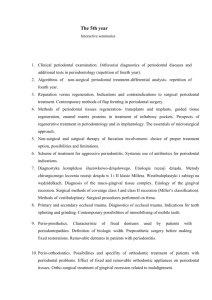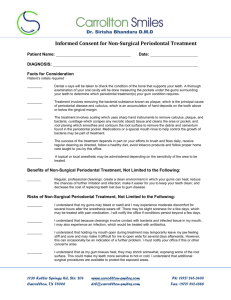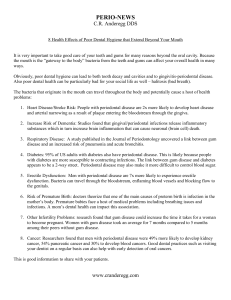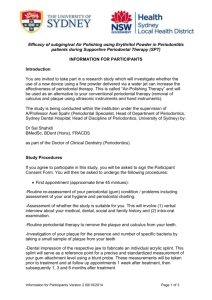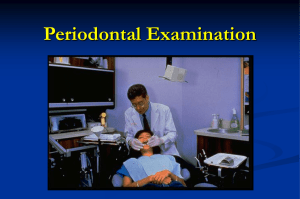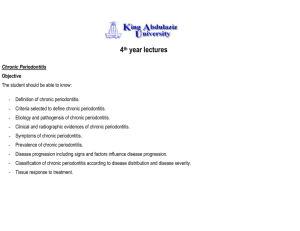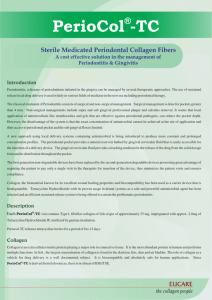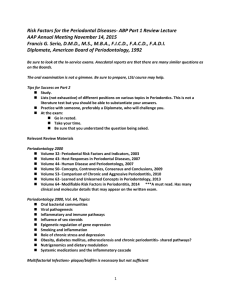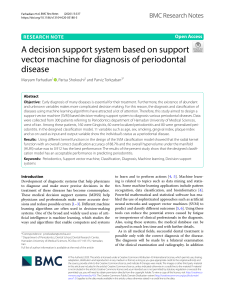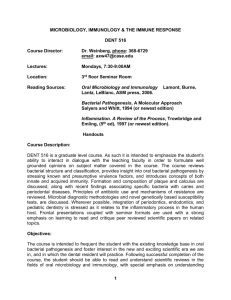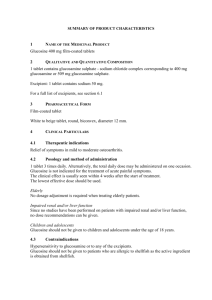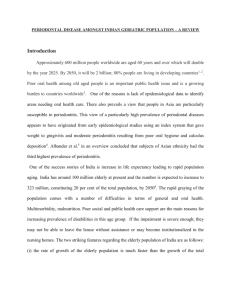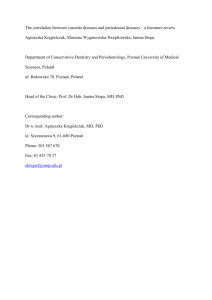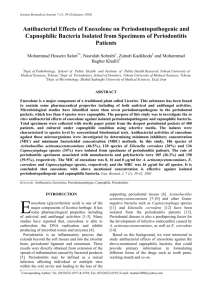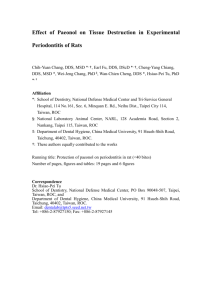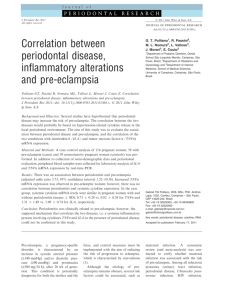CherepynskaY.A., Volkova O.S., Dolya E.I. APPLICATION OF
advertisement
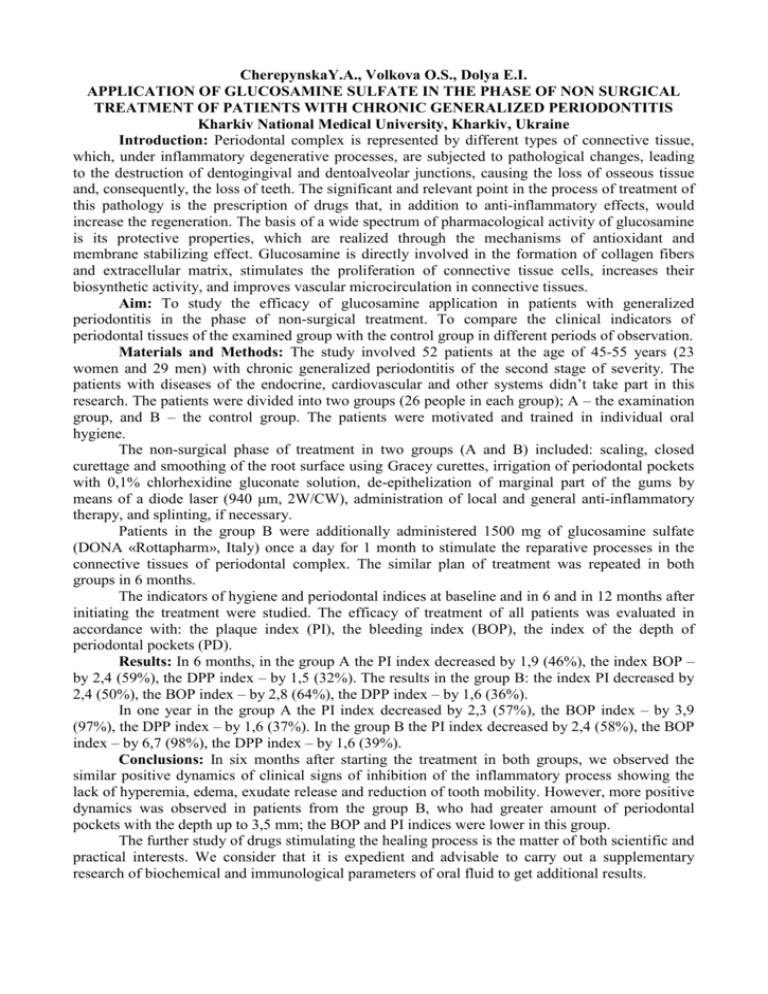
CherepynskaY.A., Volkova O.S., Dolya E.I. APPLICATION OF GLUCOSAMINE SULFATE IN THE PHASE OF NON SURGICAL TREATMENT OF PATIENTS WITH CHRONIC GENERALIZED PERIODONTITIS Kharkiv National Medical University, Kharkiv, Ukraine Introduction: Periodontal complex is represented by different types of connective tissue, which, under inflammatory degenerative processes, are subjected to pathological changes, leading to the destruction of dentogingival and dentoalveolar junctions, causing the loss of osseous tissue and, consequently, the loss of teeth. The significant and relevant point in the process of treatment of this pathology is the prescription of drugs that, in addition to anti-inflammatory effects, would increase the regeneration. The basis of a wide spectrum of pharmacological activity of glucosamine is its protective properties, which are realized through the mechanisms of antioxidant and membrane stabilizing effect. Glucosamine is directly involved in the formation of collagen fibers and extracellular matrix, stimulates the proliferation of connective tissue cells, increases their biosynthetic activity, and improves vascular microcirculation in connective tissues. Aim: To study the efficacy of glucosamine application in patients with generalized periodontitis in the phase of non-surgical treatment. To compare the clinical indicators of periodontal tissues of the examined group with the control group in different periods of observation. Materials and Methods: The study involved 52 patients at the age of 45-55 years (23 women and 29 men) with chronic generalized periodontitis of the second stage of severity. The patients with diseases of the endocrine, cardiovascular and other systems didn’t take part in this research. The patients were divided into two groups (26 people in each group); A – the examination group, and B – the control group. The patients were motivated and trained in individual oral hygiene. The non-surgical phase of treatment in two groups (A and B) included: scaling, closed curettage and smoothing of the root surface using Gracey curettes, irrigation of periodontal pockets with 0,1% chlorhexidine gluconate solution, de-epithelization of marginal part of the gums by means of a diode laser (940 μm, 2W/CW), administration of local and general anti-inflammatory therapy, and splinting, if necessary. Patients in the group B were additionally administered 1500 mg of glucosamine sulfate (DONA «Rottapharm», Italy) once a day for 1 month to stimulate the reparative processes in the connective tissues of periodontal complex. The similar plan of treatment was repeated in both groups in 6 months. The indicators of hygiene and periodontal indices at baseline and in 6 and in 12 months after initiating the treatment were studied. The efficacy of treatment of all patients was evaluated in accordance with: the plaque index (PI), the bleeding index (BOP), the index of the depth of periodontal pockets (PD). Results: In 6 months, in the group A the PI index decreased by 1,9 (46%), the index BOP – by 2,4 (59%), the DPP index – by 1,5 (32%). The results in the group B: the index PI decreased by 2,4 (50%), the BOP index – by 2,8 (64%), the DPP index – by 1,6 (36%). In one year in the group A the PI index decreased by 2,3 (57%), the BOP index – by 3,9 (97%), the DPP index – by 1,6 (37%). In the group B the PI index decreased by 2,4 (58%), the BOP index – by 6,7 (98%), the DPP index – by 1,6 (39%). Conclusions: In six months after starting the treatment in both groups, we observed the similar positive dynamics of clinical signs of inhibition of the inflammatory process showing the lack of hyperemia, edema, exudate release and reduction of tooth mobility. However, more positive dynamics was observed in patients from the group B, who had greater amount of periodontal pockets with the depth up to 3,5 mm; the BOP and PI indices were lower in this group. The further study of drugs stimulating the healing process is the matter of both scientific and practical interests. We consider that it is expedient and advisable to carry out a supplementary research of biochemical and immunological parameters of oral fluid to get additional results.




